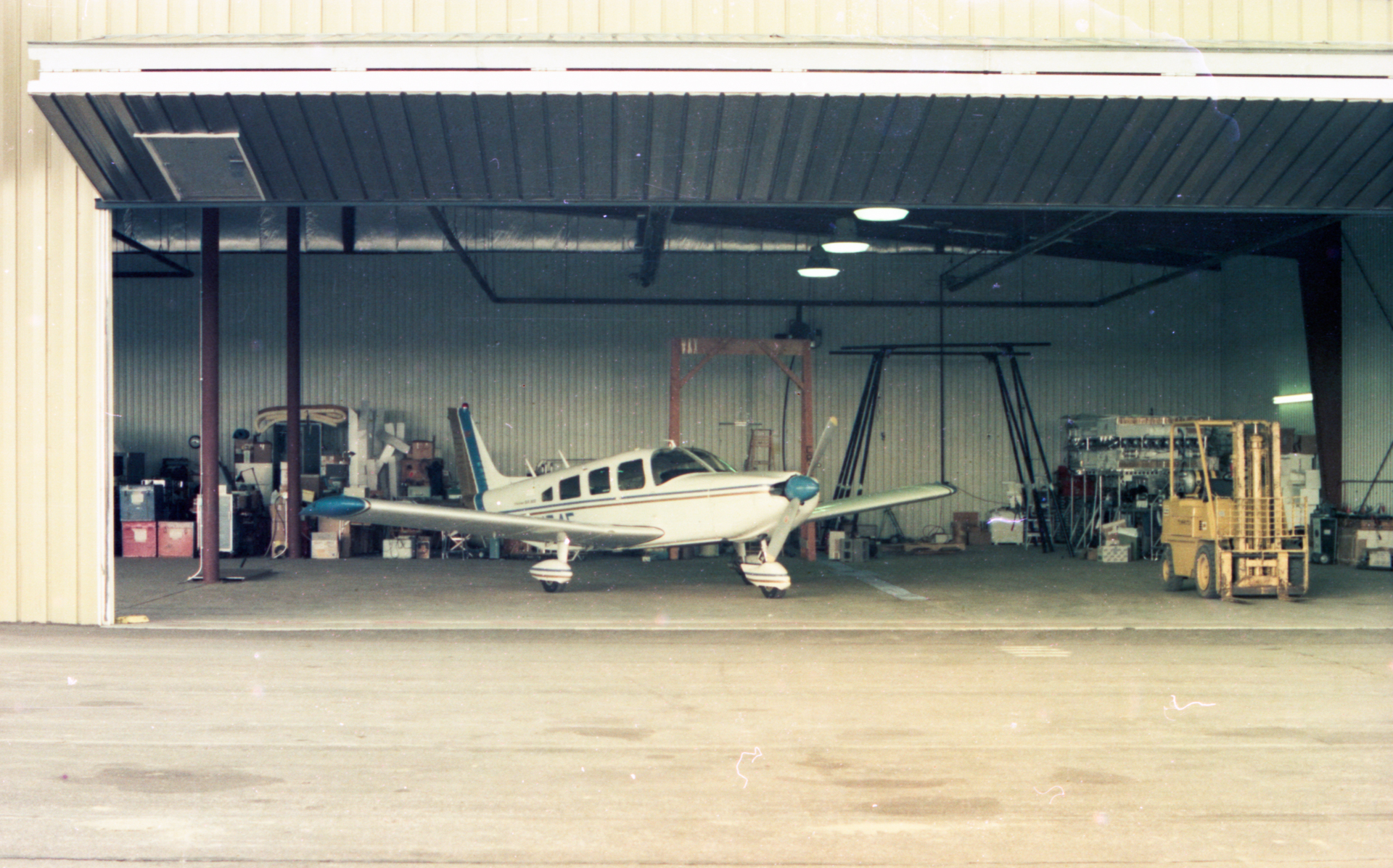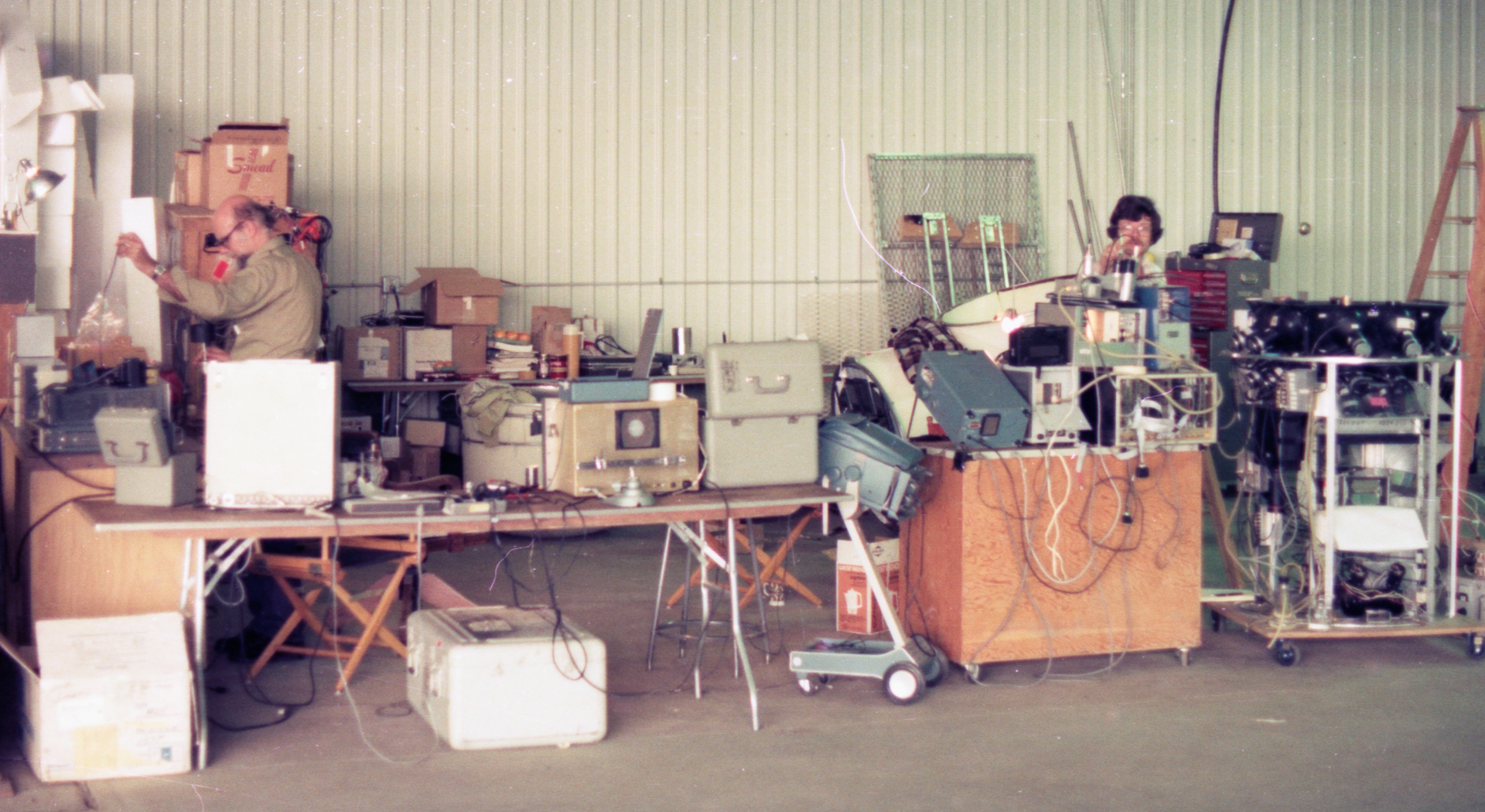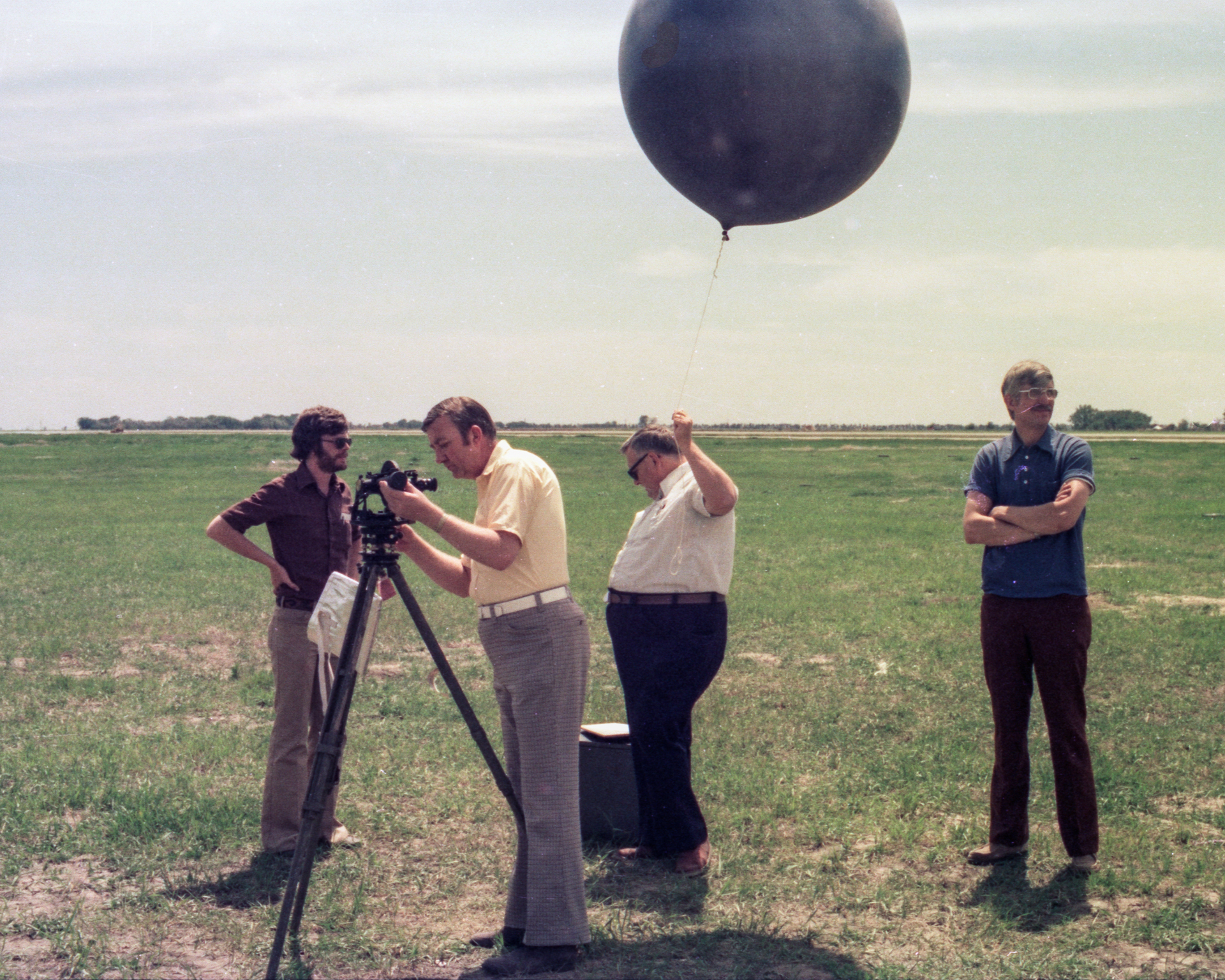Setting up Shop
Scientific balloon launches have been part of NASA’s mission for over 30 years, but in 1977, they were conducted by NCAR– the National Center for Atmospheric Research. NCAR maintained a balloon launching facility in Texas that had all of the equipment and resources to support experiments like ours. Unfortunately, Texas was too far south for our experiment. Instead, we would be operating from makeshift facilities in Aberdeen, a town of 25,000 in an area of South Dakota that offered low population, but enough infrastructure to meet our technical and launch requirements.
There was a regional airport outside of town, and an airplane hangar was provided to house our laboratory field station. We were not the only researchers, however. Groups from other universities were also trying to measure the properties of cosmic rays. We each had a section of the hangar to set up and prepare our experiments for launch. After packing up our instrument and all the essential support equipment from our 4th-floor lab in the Physics building into a rental truck and driving a day west on Highway 12, we arrived in Aberdeen. It took us several more days to recreate an operational cosmic ray field lab in the airplane hangar.
We also needed a place to stay. There weren’t dormitories or guest houses for visiting researchers. But there was a new and inexpensive hotel in town—the Super-8, created by an Aberdeen entrepreneur. It was based on the idea that there was a market for simple unadorned, but clean and friendly, overnight accommodations. And he would fill his hotel by advertising a low cost: $8.88 per night! This was an attractive price even in 2024 dollars (~$60) for an overnight room.
That first hotel in Aberdeen was so successful that he built more in the region, which were also successes and by the time we stayed there, the owner was flying between his properties in his own private plane, which was occasionally seen with its distinctive Super-8 logo outside our hangar-laboratory!


Monitoring the weather
Launching a balloon is a complicated event requiring specialized equipment; operating it once aloft also requires specialized know-how. This is what you find at balloon launch centers like the facility in Palestine Texas. But since we couldn’t go to Texas with our experiment, the Texas crew came to us.
And they too had to improvise and set up their equipment, which included heavy machinery, cranes and cables, trucks, trailers, communications gear, and weather forecasting tools. For the latter, a weather station was quickly set up on the roof of one of the equipment trailers. The prominent instrument was the anemometer, a triplet of wind-catching cups on arms balanced on a bearing that ran a small generator. The faster the wind, the higher the generator voltage, which was displayed on an analog dial gauge in the trailer.
Having earned a weather merit badge in Boy Scouts and being fascinated with such instruments, I wondered if I could make a better display for the anemometer. I worked with an electronics prototyping panel, and using some simple components (including a 555 timer chip), crafted a digital readout for it. This was met with astonishment on the part of the Texans. They had never seen such a thing—a digital display of the wind speed! Imagine that! (Yes, recall this was 1977, and digital watches were the newest exclusive– and expensive– rage).
Now having a measure of the wind speed, all we had to do was wait until it died down enough to launch a balloon. The wind needs to be calm enough that the balloon can be laid out, inflated, and launched without it getting twisted or launched off-angle. A gentle puff is ok, but anything more is trouble. And on the open prairies of South Dakota, the wind blows nearly all the time.
So we waited for the conditions to come together where the wind would stall long enough to conduct a launch. A meteorologist on the Texas crew pored over the temperature, cloud cover, air pressure and wind maps, and made 12-hour forecasts. The wind profile overhead was measured directly. This was done by releasing a weather balloon (black, to see it against the sky), watching it rise and drift with the winds it encountered, and tracking it with a transit/telescope. From these measurements, the wind speed aloft can be inferred.
We would meet twice a day to hear the meteorologist’s report on his analysis, always with the same prediction: no indication of winds falling below 5mph.
This would free us up to plan our next 12-hour period. What does one do when the wind keeps delaying the mission?


